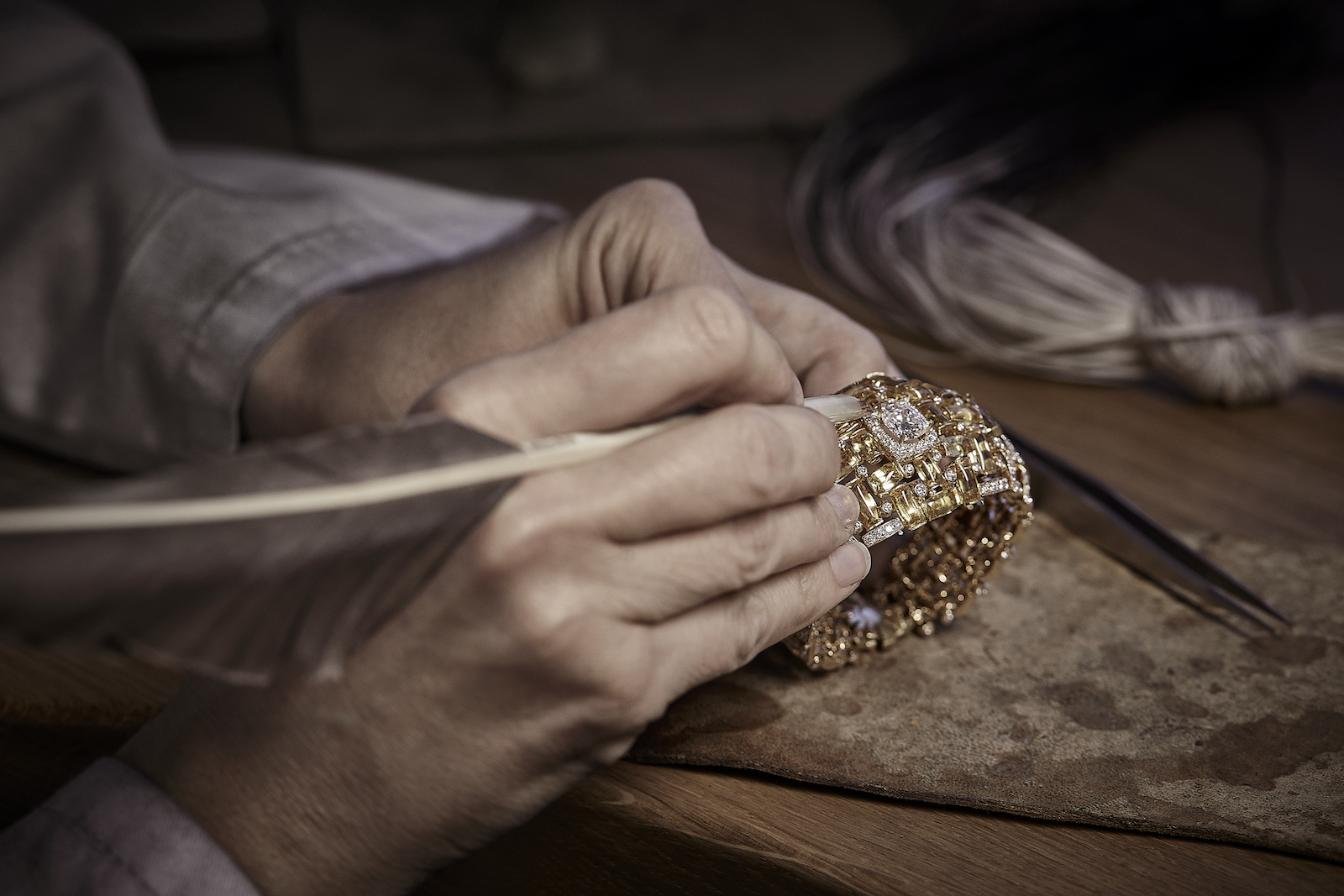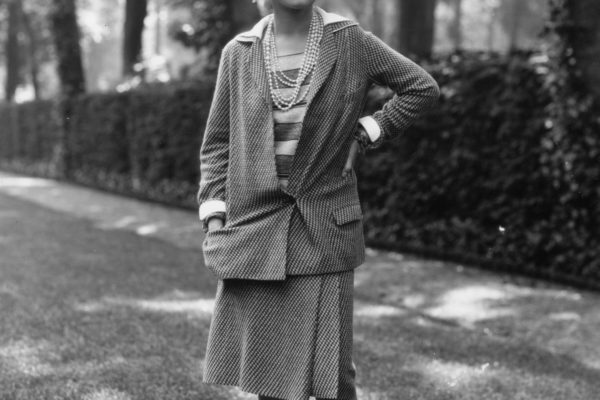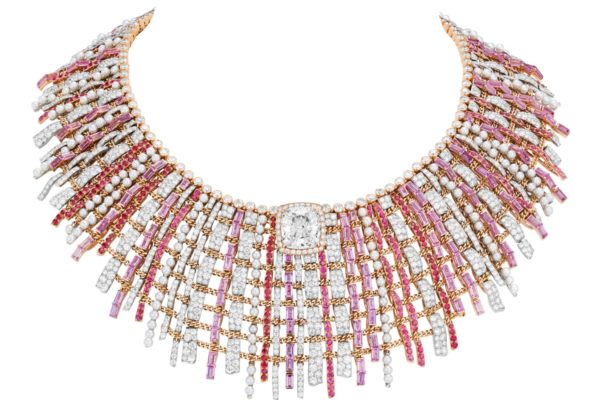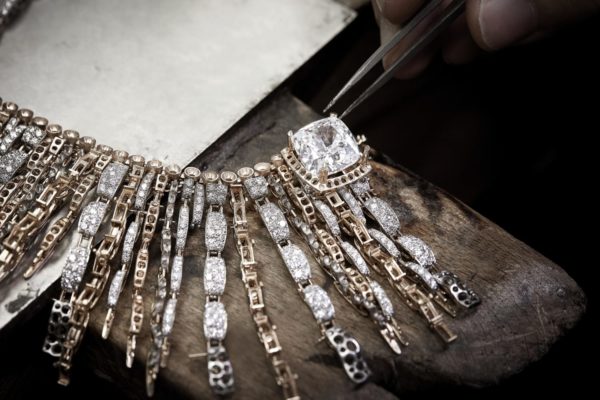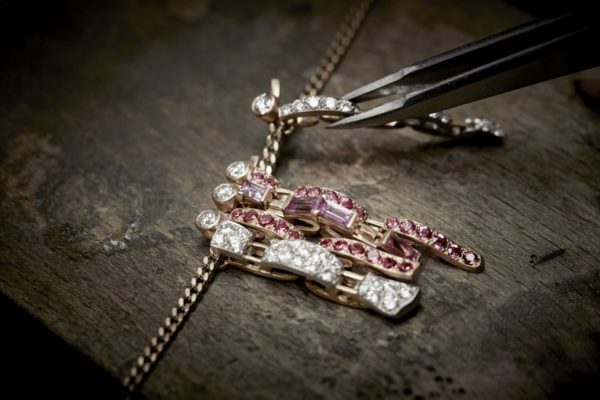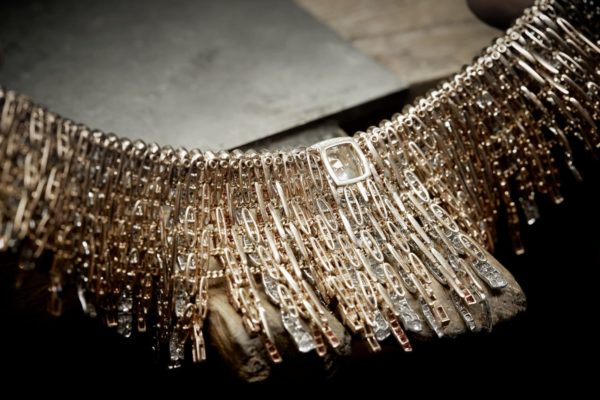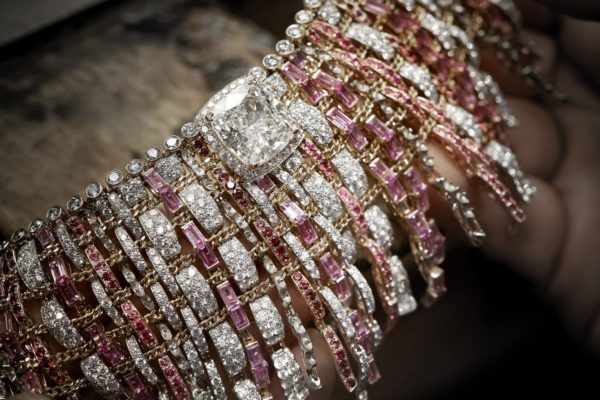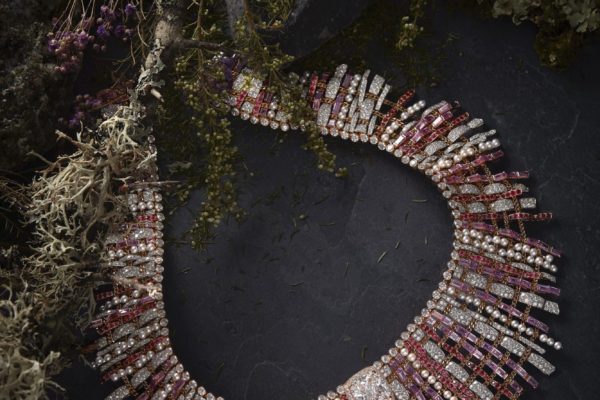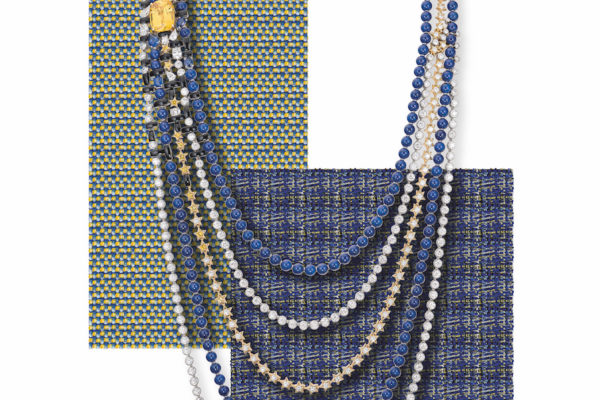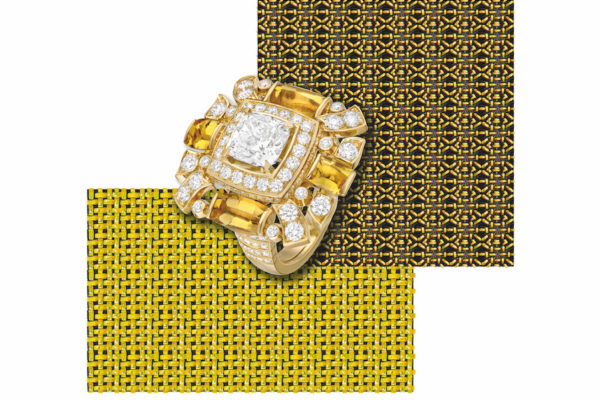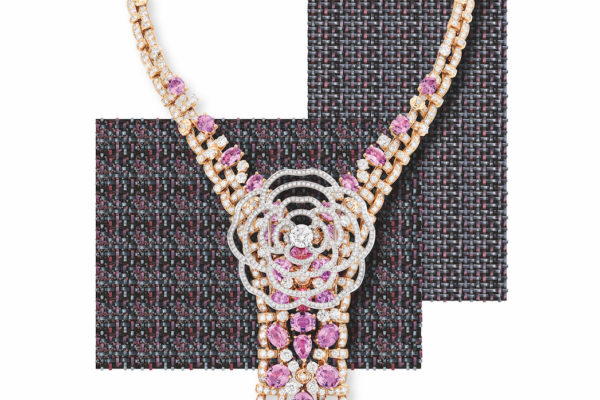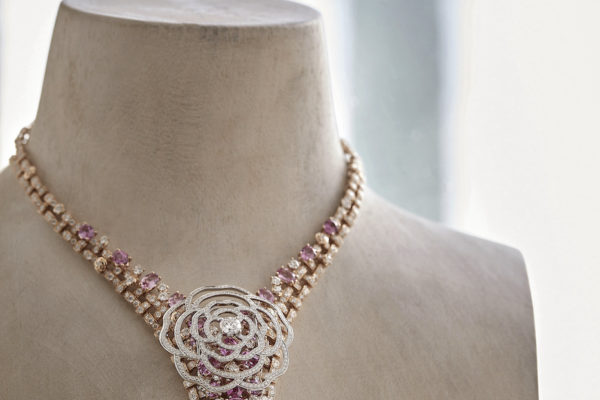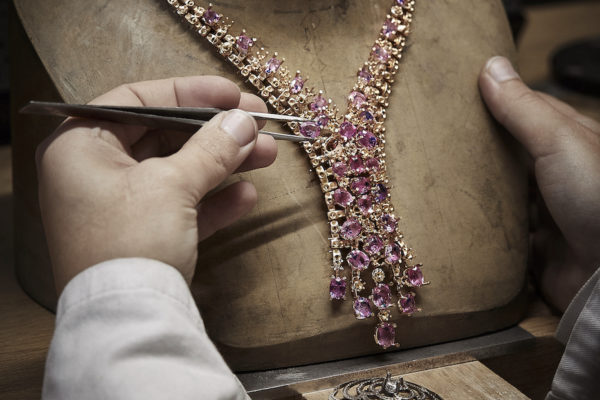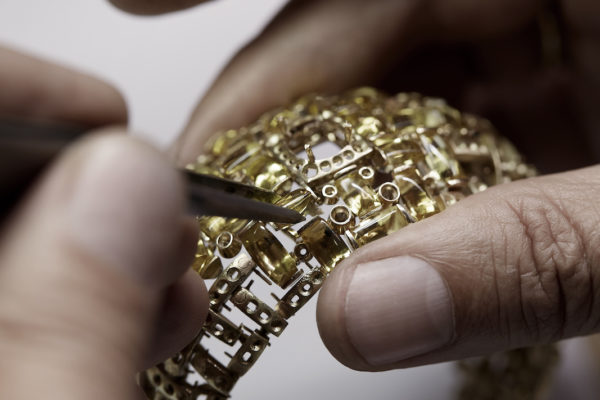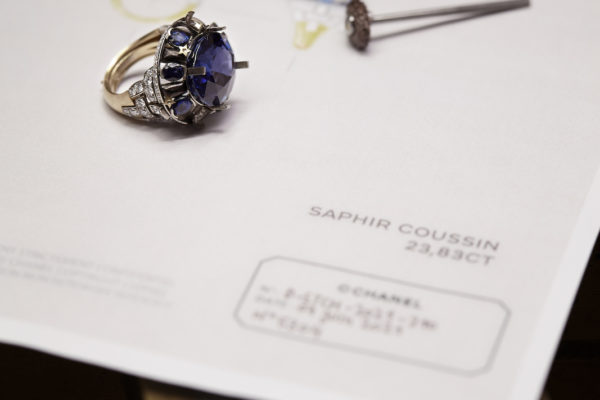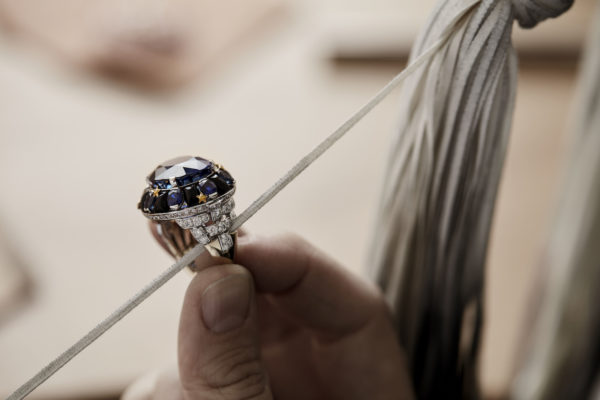When Chanel transforms tweed into jewellery
In 2020, thanks to the expertise of its high jewellery workshops, Chanel transformed this famous scottish fabric into a high jewellery collection that was as precious as it was realistic. Three years later, under the impetus of Patrice Leguéreau, the director of Chanel’s jewellery design studio, a second jewellery chapter dedicated to tweed has opened. Isabelle Cerboneschi, Paris
Tweed and Chanel have a history that goes back a hundred years. It was in the 1920s that Gabrielle Chanel discovered Scotland, its rugged landscapes, its changing climate and among all things, its beauty. She was then romantically involved with Hugh Grosvenor, the Duke of Westminster, whom she had met in 1924 in Monte Carlo. Their romance lasted more than ten years. During summer, they sheltered their love affairs away from prying eyes at Rosehall Estate, an imposing building entirely redecorated by Gabrielle Chanel. With its 22 bedrooms, the estate, located in the heart of the Scottish Highlands, has since been abandoned.
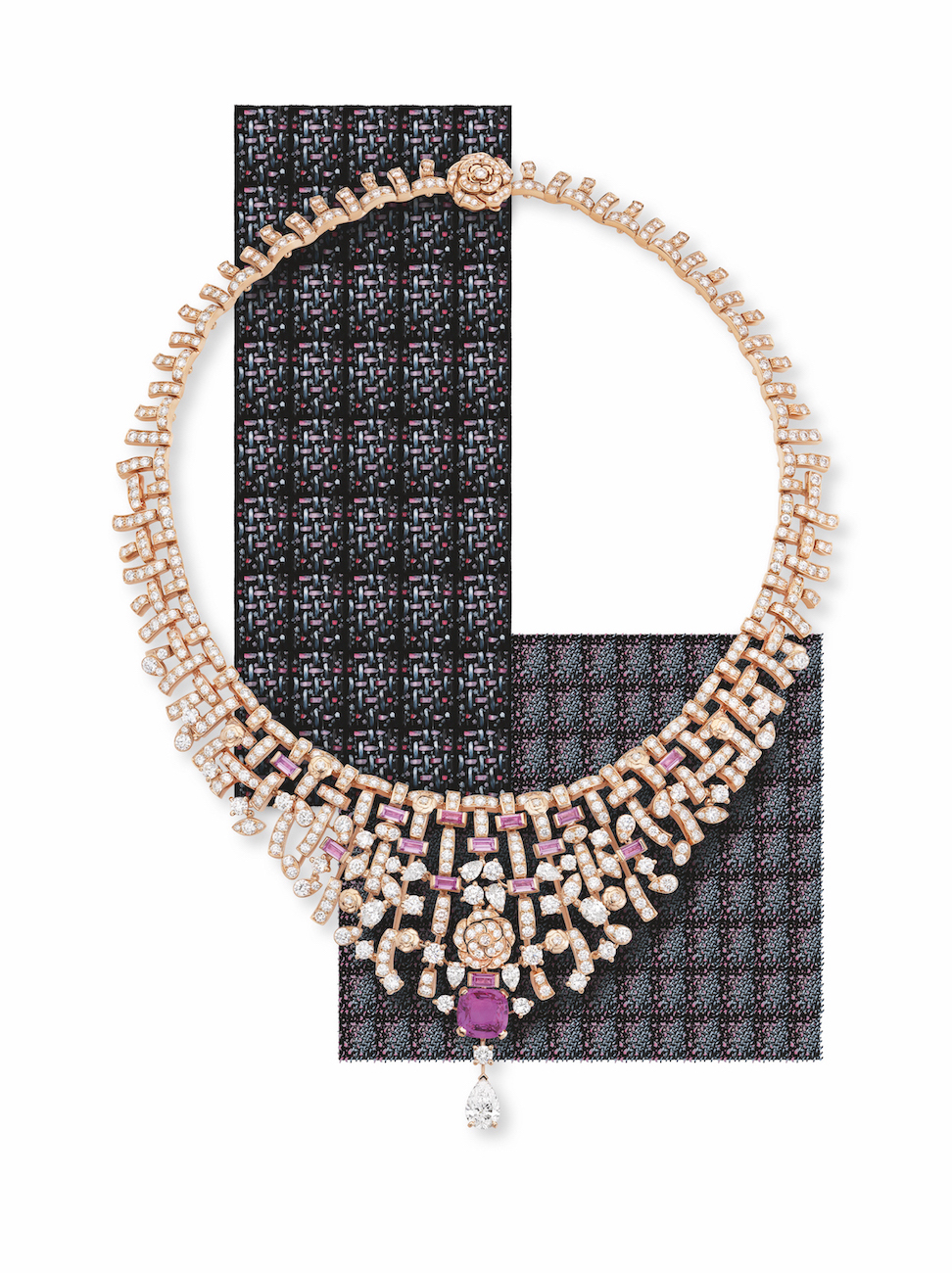
To cope with the harsh climate, Mademoiselle borrowed her aristocratic lover’s tweed jackets to protect herself from the wind. The origin of the name of this carded woollen fabric of mixed colours is uncertain: it is thought to come either from the River Tweed, which flows through Scotland and marks the border with England, or from the deformation of the Scottish word “tweel”, meaning twill. Scottish peasants invented this solid, rough material to protect themselves from the cold and damp. Tweed was ennobled in the 19th century when the aristocracy took a liking to spending time in the countryside hunting and fishing. Its colours are inspired by Scottish nature, the golden brown of the moor, the green of the heather, the blue of the Atlantic Ocean, the red of lichen and the purple of elderberries.
Gabrielle Chanel was the first to introduce this gentleman farmer material to the world of haute couture, back in 1924. She collaborated with a Scottish manufacturer who produced her fabrics in the shades of her choice and introduced her first tweeds into her collections. She continued to use this material to create all kinds of garments, from sports suits to day suits and coats. “Chanel, an influential fashion figure whose clothes are at once simple, practical and elegant, is featuring tartan tweed in its latest collections. A few models have already been released for the summer, and others are forthcoming in her autumn collection”, said the October 1927 issue of American Vogue. Tweed became one of Gabrielle Chanel’s signatures.
In 2020, Patrice Leguéreau, the director of Chanel’s Jewellery Creative Studio, drew inspiration from it to create a first collection of 45 pieces of high jewellery entitled Tweed de Chanel. “I wanted to present this fabric that was so central to the Chanel universe, and which became the inspiration for a jewelry collection for the first time. It was a question of laying the foundations, almost literally. While jewelry has often drawn on the codes of couture, it is exceptional for a fabric to serve as the point of departure for a jewelry collection. But ever since I joined Chanel in 2009, I have been fascinated by tweed. One of the first people I met was François Lesage, and I remember him showing me his archives of embroidery and tweed. I was immediately drawn to this material and its history. And I also had squares of tweed woven specially, so that I could examine the fabric in close up and draw my inspiration from it for the second collection”, he explains.

One of the masterpieces of this first collection, the ‘Tweed Couture’ necklace, has been re-edited and entered the Chanel Jewellery Heritage collections in January 2023. This necklace is composed of a multitude of swirls of pink gold and platinum threads and irregular lines set with pink sapphires and red spinels, diamonds and pearls. It is set with a 10.20-carat DIF Type IIa (*) diamond as the centre stone.
In 2023, a second chapter opens with 63 pieces dedicated to tweed. “I really wanted to push the concept further, to carve out a definitive place for this exceptional fabric in the Patrimoine of High Jewellery. The idea was to penetrate more deeply into the material, to zoom in on the detail. And to enrich this founding theme of the House with even more precious design and craftsmanship. I wanted to weave a tweed from precious stones, to create bolder shapes, to compose a unique story with every piece in the collection, which counts over sixty”, Patrice Leguéreau points out.
The director of Chanel’s Jewellery Creative Studio was inspired by five iconic objects dear to Gabrielle Chanel. The first one is the white ribbon, which intertwines with the threads of the fabric, as I was able to discover on the very afternoon of the show presenting the fall-winter 2023/24 haute couture collection on a loom in the workshops of the embroiderer Lesage. At Chanel, tweed is an embroidery and is constructed line by line. The craftsman adds woollen threads to ribbons of lace or silk to create a precious material. The second theme is camellia, a flower dear to Gabrielle Chanel. Then we find the comet, the sun and finally the lion, the astrological sign of Mademoiselle, born on 19 August 1883. To bring his vision to life, Patrice Leguéraux used gold, platinum, pearls, precious stones and rock crystal.
The most remarkable thing about this collection is the way in which the jewellers have succeeded in reproducing the weave of the fabric. “You can’t imagine the ingenuity and inventiveness deployed by the craftspeople in our workshops in reproducing the flexibility and fluidity of the fabric using metal and precious stones! It was a real challenge at times », explains Patrice Leguéraux. Thanks to the expertise of the workshops, Chanel was able to reproduce the multiple variations of tweed, its softness and irregular weave, with clever ajours, special articulation techniques and gold or platinum threads. Diamonds, pearls and sapphires are layered and intertwined on several levels, giving the jewels a highly realistic texture.
When you look at the ‘Tweed Royal’ necklace, the centrepiece of the collection, with its yellow gold weave trimmed with a chain like the one found at the bottom of the house’s emblematic jackets to ensure a perfect fit, you get the impression that you’re looking at a trompe-l’œil. You think you’re looking at fabric, but you’re actually looking at gold links set with diamonds and rubies. It’s a form of alchemy: how do you transmute fabric into gold?

*GIF diamonds are diamonds of exceptional purity and whiteness, with no inclusions visible under a x10 magnifying glass.
Type IIa” and “Type IIb” diamonds are extremely rare (they represent less than 2% of diamonds found in nature). They are the chemically purest diamonds, offering a unique white colour and brilliance.

